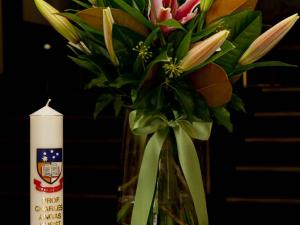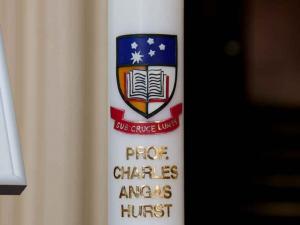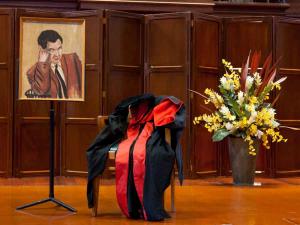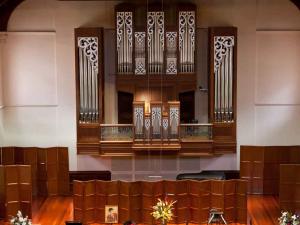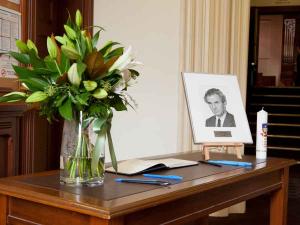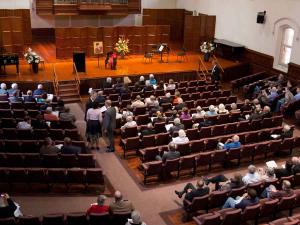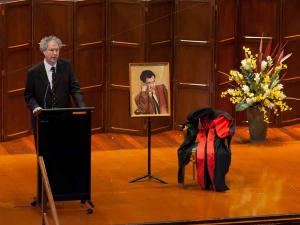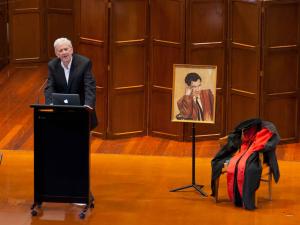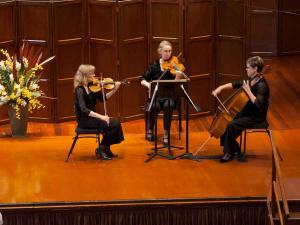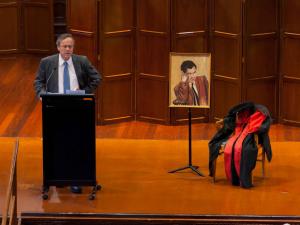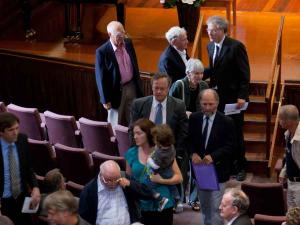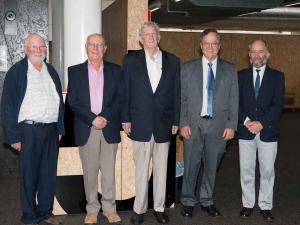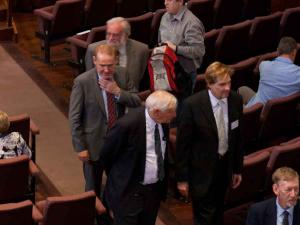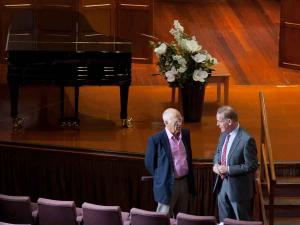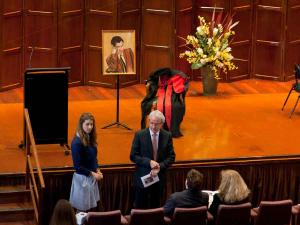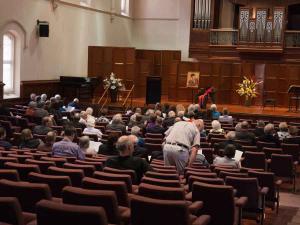Recollections
A collection of historical information about colleagues in the Department of Physics at the University of Adelaide. Written by current and former staff members.
-
Professor Leonard G H Huxley
1902-1988
After a period studying and working in the UK, Leonard Huxley returned to Australia in 1949 to take up the Elder Chair of Physics at the University of Adelaide.
Until he left in 1960 to become Vice Chancellor of the Australian National University, Huxley led enormous growth in the Physics Department and its research strengths. That growth was helped by growing undergraduate student numbers in the post-war period, and by the introduction of the PhD degree at Adelaide in the early 1950s. Huxley introduced the concept of the research group at Adelaide, including one to study atmospheric physics using radar reflections from meteor trails, and another to study electron drift and diffusion in gases. Solid state physics, including biophysics, and seismology research also started under Huxley's leadership.
-
Dr Colin S Gum
Born: 1924
Died: 29-04-1960On 1960 April 29, Dr Gum died in a skiing accident at Zermatt in Switzerland, where he was visiting for a brief holiday.
He had been appointed last year to the post of Senior Lecturer in Astrophysics at Sydney University and for the past ten months he had been working as a Carnegie Fellow at the Mount Wilson and Palomar Observatories. He had gone to Europe to talk with astronomers and manufacturers about the plans for a 36-inch reflector for Sydney University and the accident in. Switzerland occurred between his visit to Holland and his going to Germany. Colin Gum was one of the best liked and most admired of younger Australian astronomers and many of us have a deep sense of personal loss at his too early death. Australia is still very short of first class astronomers trained and educated in the country, and his death is a severe blow to the development of Australian astronomy.
Colin Gum was born in 1924; he received his Honours B.Sc. degree in physics from Adelaide University in 1949. He came to Mount Stromlo Observatory directly from Adelaide University and he received his M.Sc. degree from Adelaide University on the basis of work done at Mount Stromlo (1951). In 1955 he was awarded his Ph.D. by the Australian National University, being one of the first to receive the Doctorate from this university. In 1956 he was appointed a Research Officer in the Division of Radiophysics of the C.S.I.R.O., and he held this post until 1959, when he was asked to take charge of the programme in Observational Optical Astronomy in the School of Physics of Sydney University.
During his relatively brief career, Dr Gum has made some notable scientific contributions. Jointly with Professor C. W. Allen, he carried out from Mount Stromlo Observatory one of the early sky surveys (1950) of the distribution of radio noise (at 200 Mc/s), and he will be remembered for many years to come for his successful search for and discovery of hydrogen-emission regions of the Southern Milky Way.
The large and significant complex of nebulosity in Puppis and Vela is generally referred to as "Gum's Nebula" ; a finer monument is difficult to imagine. His Survey of Southern H II Regions (Royal Astronomical Society Memoirs, Vol. 67, part 4, 1955) has become a standard reference volume for all workers in the field.
During his three years at the Radiophysics Laboratory, Dr Gum worked primarily with Dr Frank J. Kerr on problems relating to the spiral structure from 21 cm observations of the Southern Milky Way. He was an active and very effective member of the Sub-Commission of the International Astronomical Union, which re-defined the Galactic Pole, and was elected a Fellow of the Royal Astronomical Society on 1955 October 14.
Upon his return to optical astronomy last year, he turned to problems of interstellar polarisation and he indicated that he would want to spend much time in the years to come on questions relating to galactic magnetic fields.
For a person of his age, Colin Gum leaves behind a solid and impressive bibliography of significant scientific contributions and, in spite of his too- early death, he has left his permanent mark on the development of astronomy.
By BART J. BOK
-
Professor Herbert (Bert) Sydney Green
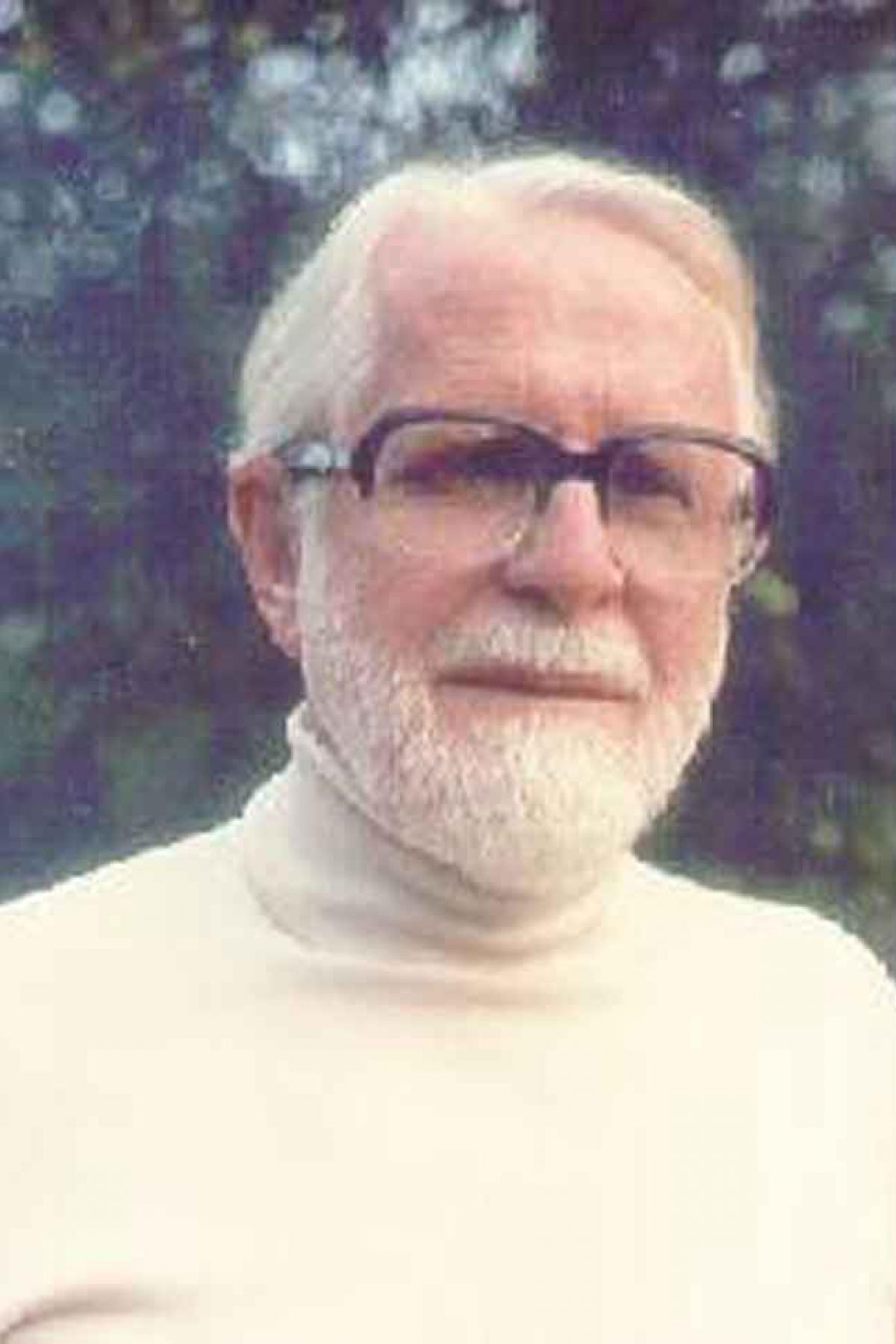
Born: December 17, 1920
Died: February 16, 1999Professor Herbert Sydney Green was appointed to the first Chair of Mathematical Physics in 1951. His arrival and subsequent service brought an international recognition to the University which continues to this day.
Bert Green was born in 1920 in Ipswich and graduated from Imperial College with a B.Sc. in 1941. He served with the RAF as a meteorological officer, and then became a student of Nobel Laureate Max Born at Edinburgh, being awarded not only a Ph.D. (1947) but also a D.Sc. (1949), the latter for his seminal work with Born on the molecular theory of liquids. As formulators of the "BBGKY equations", Born and Green became co-founders of modern many-body theory.
By the time he reached Adelaide, Green was publishing work on the structure of cosmic ray showers. Within two years, his field of research became quantised fields and particle physics, when he invented "parastatistics", a permutation symmetry of identical particles which sits between the conventional statistics of photons and electrons. Through the rest of his life, Green worked out many extensions of this idea. Indeed, research in this area continues, most of it based on the Green Ansatz of the original 1953 paper.
Bert Green's originality, independence, and variety of research interests made him the ideal person to lead the Department of Mathematical Physics. The success of the Department was of great importance to the University, as mathematical physics is a vast enterprise internationally.
Green spread his interests not only to standard topics such as plasma physics, statistical mechanics, gravitation and general relativity, and group theory, but to emerging areas like artificial intelligence and environmental protection. With Rainer Radok and John Hails, he investigated the hazards of a projected petrochemical plant at Redcliffs, and persuaded a reluctant government to abandon it because the consequences for the head of Spencer Gulf would be dire.
In his later years, in work with Professor Terry Triffet, Green wrote extensively on the physics of the brain and the mechanism of consciousness, culminating in the book "Sources of Consciousness" (1997). His last book, "Physics, Information and the Observer", to be published by Springer, was completed last December despite his suffering from lymphoma. It sets out his view of physics, including a severe criticism of the "big bang" theory of the origin of the Universe. Altogether he wrote nine books and over 150 papers. His book on "Matrix Mechanics" was published in four languages.
Although Bert suffered from severe deafness for most of his life, he enjoyed concerts and social occasions, being always an excellent host. He had little taste for administration, but when required to do so, as Head of Department or Dean of the Faculty, was conscientious, kindly, efficient and understanding. Whilst he was President of the Australian Mathematical Society (1974-76), he threw himself wholeheartedly into the ultimately successful campaign to free the imprisoned Ukrainian mathematician, Leonid Plyush.
Bert Green is survived by his wife Marlies, son Roy and daughter Johanne and their spouses, and five grandchildren. He is also survived by hundreds of students inspired by his teaching, of which 23 were his research students, and 10 now occupy chairs throughout the world.
-
Dr Stanley Tomlin
Born: September 30, 1916
Died: May 14, 1990Heysen Chapel 18 May 1990
The Obituary also appeared in the 'Australian Physicist' Vol.27 No.9 p.18S Sep. 1990 and in King's College London Spring 1991 Edition of 'In Touch' p.2S.
Doreen, John, Margaret, absent family, dear friends and colleagues.
My name is Harry Medlin. Quite recently Stan sought and received an assurance from me on four matters to be arranged for this occasion today.
First, that I would speak on this occasion for ten or so minutes and say what was appropriate in all the circumstances.
Secondly, that this occasion was to be conducted in an entirely secular manner.
Thirdly, that I should assure all of you of his deep desire that no-one should feel any unease or discomfort in that respect.
I shall return to the fourth matter later.
Stanley Gordon Tomlin was born on the 30th. of September 1916 at Burnham-on- Crouch in Essex, England He was a most unusual man; among many other things he was at once both English and Australian.
Stan was a brilliant student. He moved from place to place with his parents; he and Doreen met at the Co-Educational High School in Harwich and he went to King's College of The University of London on an Essex County Scholarship. He graduated in June 1937 after only two years of undergraduate study with First Class Honours in Physics. Indeed he was awarded the prestigious Granville Studentship for the most distinguished student in Physics from all the Colleges of The University of London.
Stan's PhD. studies were interrupted by the Second World War (1939-1955). He worked on Radar and had some contact with Mark Oliphant. He was however able to complete his PhD. part-time and this was conferred in 1945 and he returned to King's College as a Lecturer in Physics where he developed some skills in, among many other things, the handling of ex-service students.
Stan and Doreen were married in June 1940 in Canterbury. John was born in 1942 and Anne in 1944. Deborah and Robert joined the family much later.
Stan changed his research to Biophysics at King's in 1946. It was because of Anne that the family sought suitable work in a dry climate. Stan's services were sought to establish a new research group in The University of Adelaide. With superb references from five most distinguished physicists he moved to Adelaide as one of the most brilliant scientists to migrate after the War. He had already made fundamental contributions to two quite distinct areas of physics, namely in radar technology where he won an Inventor' Awards and in electron microscopy for his work on the then new science of cell membrane structure. I offer three comments, among many similar, from his Referees Reports.
- "Both as a teacher and a researcher Dr Tomlin is first class."
- "He is quiet in manner and absolutely reliable."
- "He is not easily deflected from an established plan of work."
Dr Tomlin established a research group and he personally supervised research work that led to eleven Master's degrees and twenty five PhD's. The projects covered an enormous range and variety of subjects. It can be said that his primary interest was in electrons and in their interactions with electromagnetic fields of various sorts and accordingly in the electrical and optical properties of solids in bulk and in thin films and whether amorphous, poly-crystalline or crystalline and whether biological, insulating, semi-conducting, or conducting both electrically and thermally. Dr Tomlin was an exacting and imaginative experimentalist. He also made fundamental theoretical and algebraical contributions to physics particularly in electron diffusion in solids, the optical constants of thin films, and, in collaboration with his son John, in urban dynamics. He was a Fellow of the b1stitute of Physics and he was awarded the distinguished degree of Doctor of Science from The University of London over twenty years ago in 1970 for his research work.
It was Dr Tomlin who gave the first sophisticated courses in the Physics Department of The University of Adelaide in those areas of physics that used to be called Modern Physics. I refer to thermal physics, statistical mechanics, quantum mechanics, solid-state physics and the like. In addition he was very sound in the three great areas of Classical Physics, namely Mechanics, Thermodynamics and Electromagnetism.
He had been promoted to Reader in Physics in 1953. He served in that capacity for many years and on the University's Faculty of Science and he was a most respected Chairman of its Research and Higher Degrees Committee.
Because of this collection of attributes in experimental and theoretical physics and in the classical and post-classical domains, it is my firmly held and often expressed personal opinion that Dr Tomlin remains the best all-round physicist ever to have served The University of Adelaide. It was, in my personal opinion, a serious oversight that he was not given a Personal Chair in Physics.
Further, Dr Tomlin served during an interregnum as Acting Head of the Physics Department from 1959 through 1960 and for the first two terms of 1961. It was during that time that the Department developed the principles of what is now known as Departmental Government, ten years before the Council gave its tacit support to the practice and twenty years before the embedding of the principles and practices in the Statutes of the University. By the time that the Elder Chair was re-occupied in the third term of 1961 the much¬ cherished principles of democratic collegial government, now espoused and indeed claimed by others, had already been developed and put in place. Dr Tomlin was a man who in some respects was perhaps somewhat too far ahead of his times.
Dr Tomlin was also interested in and contributed to the history and scholarship of physics. He wrote the history of the first 75 years of Physics at The University of Adelaide (1874-1949). In addition to his many research publications he had three historical contributions in the Australian Physicist in 1975, 1976 and 1977. He was also the official biographer for the two Braggs, Professors Sir William and Sir Laurence, Nobel Laureates, in Volume 7 (1979) of that great scholarly work, the Australian Dictionary of Biography.
Stan Tomlin retired from the tenured service of the University at the end of1981. He used his all-too-short retirement to maintain and to promote his quality of life. He devoted himself to his family; to Doreen, to John and Simi and he obviously adored his granddaughter Julia. He maintained those special associations with close friends. He pursued his great life¬time loves of reading, of music, of sport and of exercise, of scholarly disputation and of those other activities to which his superb brain and mind predisposed him.
Dr Tomlin was a most cultivated man and from humble origins. He experienced great joy and he also experienced great sadness and this he bore with stoic fortitude. He was one of the most private of people and yet perhaps somewhat paradoxically his great character did shine through. His honesty, his integrity and the honourable discharge of all his duties, his exquisite sense of the fitness of things and his personal warmth and charm made him a dear friend to all of us.
We will all miss him greatly but Doreen most of all and also John.
If I may anglicise those words of Catullus "And forever, brother, hail and farewell."
Ladies and Gentlemen, fourthly and finally Stan wanted you to hear this recording which he made for the occasion of 'The Slow Movement of Mozart's Concerto for Clarinet '.
AND SO FAREWELL
By Harry Medlin
-
Professor John H Carver
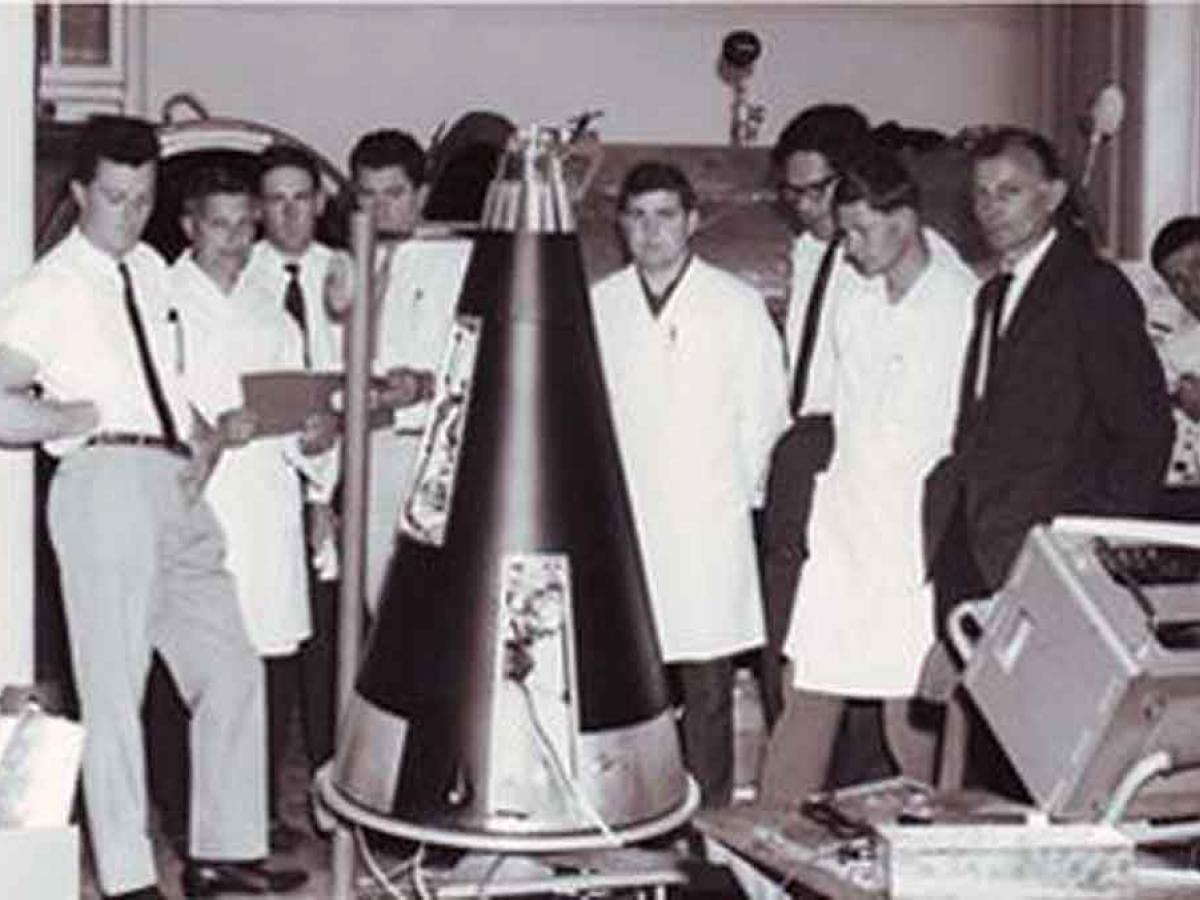
Professor John Carver and group with WRESAT satellite, 1967.
Left to right: Norm Sissons (WRE), Phil Stephenson, Dr Euan Mackenzie, Dr Brian Horton, Alan Suskin, Prof. John Carver, Bob Hurn, Jim Connock, Tony Hind (WRE).
1926–2004
John H. Carver was Elder Professor of Physics at the University of Adelaide from 1961 to 1978, before taking up the directorship of the Research School of Physical Sciences at the Australian National University.
Though trained as a nuclear physicist, his focus broadened to include atomic and molecular physics when he moved to Adelaide, and he took advantage of the close links with the Weapons Research Establishment and the Woomera Rocket Range to embark on a long series of rocket-based investigations of the atmosphere and the Sun. Famously, in 1967, he led the University team that resulted in Australia's first satellite WRESAT being launched, in collaboration with colleagues at WRE.
-
Professor Charles Angas Hurst
Mathematical Physicist and Educator
Born: September 22, 1923, Adelaide
Died: October 19, 2011, AdelaideProfessor Angas Hurst was a distinguished Australian scientist who was an international leader in research and a major contributor to the scientific community. He was the second child of Walter William Hurst and Audrey Carrie Alexandra Morris, and was born in Unley Park, South Australia, but grew up in Hawthorn, Victoria, where he attended Scotch College, and was dux of both the Preparatory and Senior Schools. His studies at the University of Melbourne were interrupted by the war years. He saw active service as commander of a radar station on Manus Island, Papua New Guinea, with the rank of Flight Lieutenant, and in subsequent years rose to the rank of Wing Commander through the University of Adelaide Squadron of the RAAF. He completed his degrees at the University of Melbourne (BA 1947, BSc 1948), and subsequently postgraduate studies at Cambridge University (PhD 1952). In 1952-1956 he was appointed Senior Lecturer in the Mathematics Department at the University of Melbourne, and in 1957 accepted the position of Senior Lecturer, Department of Mathematical Physics at the University of Adelaide. He held the position of Professor (1964-1988) until his retirement in 1988. He was appointed as a Fellow of the Australian Academy of Sciences in 1972, was awarded an honorary DSc by the University of Melbourne in 1991, and in the Australia Day Honours list 2003 was awarded Member (AM) in the General Division "for service to science, particularly in the field of mathematical physics as an educator, researcher and administrator."
Angas Hurst played an extensive and distinguished part in the management of the University of Adelaide and contributed actively to his local community. With his co-Professor in Adelaide (Prof H.S. Green) he was responsible for the establishment of mathematical physics within Australia as a research field of international distinction. His research contributions have been recognised by the international community through many visiting positions at leading institutions. He was a fine ambassador for his country and for Australian science.
Angas Hurst's commitment extended beyond the disciplines of Physics and Mathematical Physics. He served the Australian scientific community generally as a Member of the Council of the Academy of Science from 1983-1986 and as Vice-President in 1984-1985. He was always interested in fostering links across disciplines and did so particularly with mathematics as a founding member (1956) of the Australian Mathematical Society. In addition to his role as a Professor and Head of Department within the University, he provided leadership in ways that went well beyond the demands of his position. He chaired the senior Committee of the University, Education Committee, from 1973-1976 and served as a member of the Council of the University from 1975-1978. The Council of the University appointed him acting Vice Chancellor in 1985, an indication of the high esteem in which he was held within the University. He was then appointed Pro-Vice Chancellor (Research) from 1986-1988 and was responsible for a number of influential reports. He was a member of the University of Adelaide (student) Union House Committee from 1964-1967, a member of the Union Council from 1964-1973 and chaired the Union Planning Committee from 1965-1973. He was concerned with the welfare of postgraduate students and was one of the prime movers for establishing the first Graduate College of the University of Adelaide (Kathleen Lumley College); he served on the Council from its inception in 1971 until 1974.
Angas Hurst was also involved in community service in both church and political life. He was treasurer of the Clayton-Wesley Uniting Church, and was greatly admired for his compassion and wisdom in the service of the church. He also served as treasurer of the Norwood Branch of the Australian Labour Party, and was active in campaigning for the ALP at election times.
A memorial ceremony to reflect on the exceptional career of Angas Hurst as an internationally known mathematical physicist and a great servant of the University will be held on Tuesday 7 February, 2012 at 2.00pm in Elder Hall, the University of Adelaide. He is survived by his wife, three children, and four grandchildren.
By Max Lohe
-
Dr Basil H Briggs
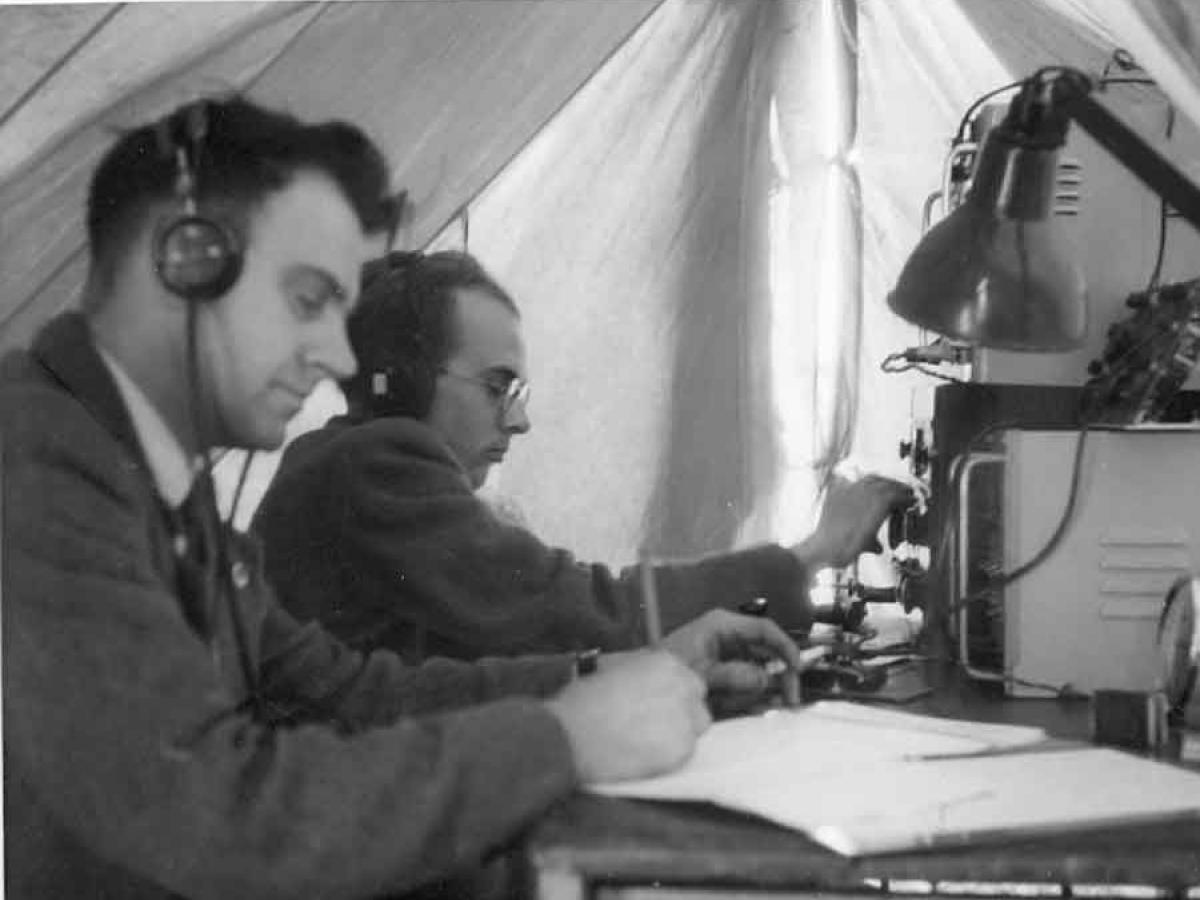
After war-time experience in radar, Basil Briggs studied under J. A. Ratcliffe at the Cavendish Laboratory in Cambridge and was awarded a PhD in ionospheric research in 1952. In 1962 he was appointed as a senior lecturer at the University of Adelaide, joining a group that was well known for upper atmosphere studies using radar to analyse meteor trails. Soon after his arrival in Adelaide, Basil Briggs and Graham Elford began planning for what was to become the world's largest low frequency radio telescope, designed for studies of the ionosphere. The Buckland Park array, a 1km square array of 2MHz dipoles, was a huge leap forward in atmospheric research from the University's field station 40km north of Adelaide. Basil Briggs was one of the most talented physicists in the history of the Adelaide Physics department. Ratcliffe was heard to say, on a visit to Adelaide in the 1960's, "Basil Briggs is - I think - the soundest physicist I know". Basil Briggs expressed that talent as a thoughtful and generous lecturer, and as a mentor and research colleague to many postgraduate students in the department.
A summary of his career, written by his colleagues Graham Elford and Bob Vincent, is available. It was published in the Journal of Atmospheric and Terrestrial Physics, Vol.56, No.12, pp.1533-1534, 1994.
-
Professor John Prescott
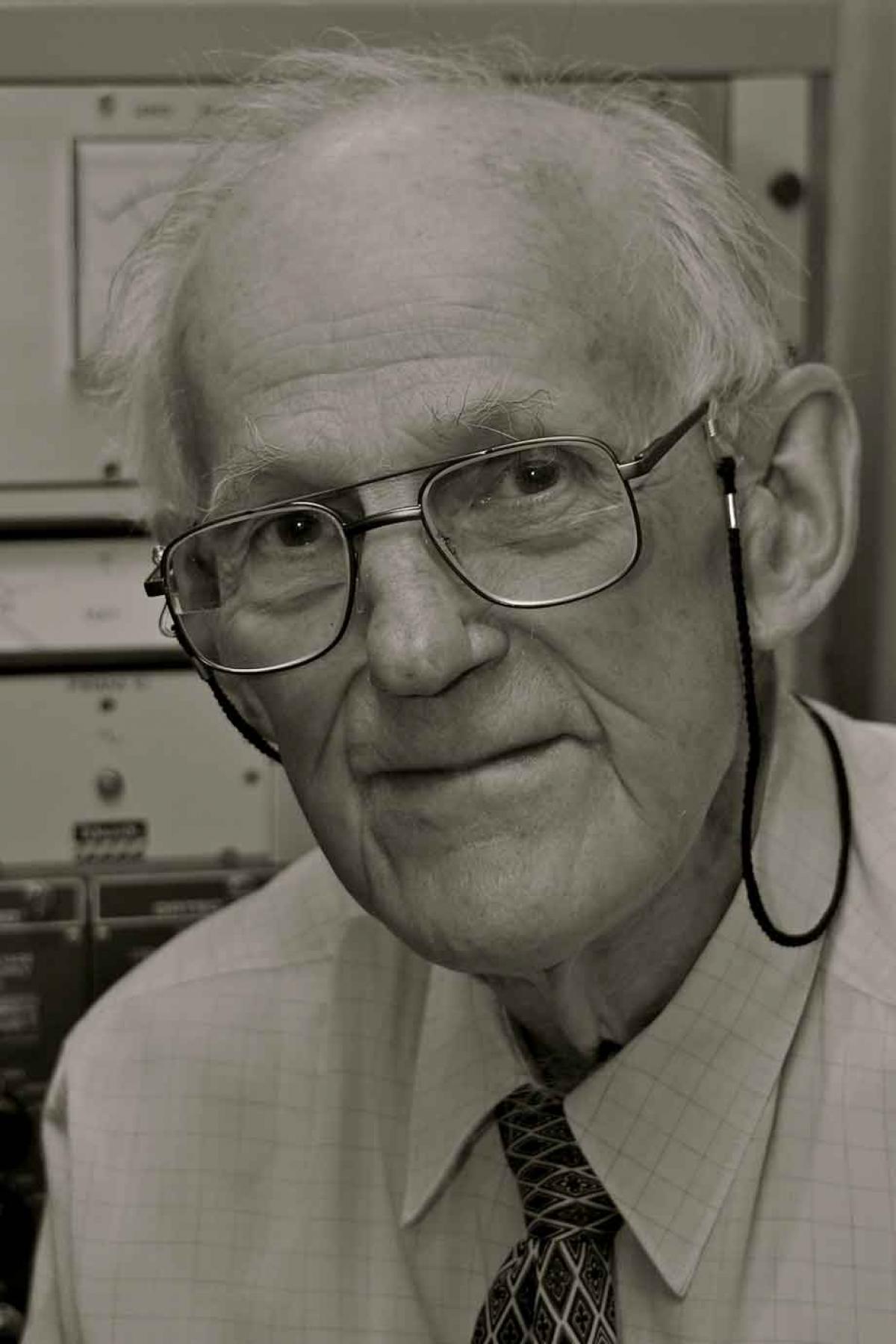
Born: May 31, 1924
Died: September 1, 2011John Russell Prescott, affectionately known to his colleagues and students as "Prof", was born in Egypt on May 31st, 1924, in sight of the pyramids of Giza.
However, John spent only the first three months of his life there as his family was about to move to Adelaide, where his father was to become the first Professor of Agricultural Chemistry at the Waite Agricultural Research Institute and later, in 1938, the Director of that Institute. While his father was Director, the family lived in the historic Urrbrae House, of which John continued to be a dedicated Friend until the time of his death. He attended Scotch College where he excelled both academically and on the sports field, and in 1942 entered the University of Adelaide to study Physics. He graduated in 1945 with the degree of BSc (Honours) and in the same year became engaged to Josephine Wylde. He moved to Melbourne to undertake his PhD studies, and he and Jo were married in 1947. In 1948 John was elected an Associate of the Institute of Physics, and in April 1949 was awarded his PhD for his dissertation on cosmic ray showers and bursts. This was one of the first two PhDs in Physics to be awarded by the University of Melbourne. During his time in Melbourne John also worked as one of the two foundation employees of the nascent Australian Atomic Energy Commission.
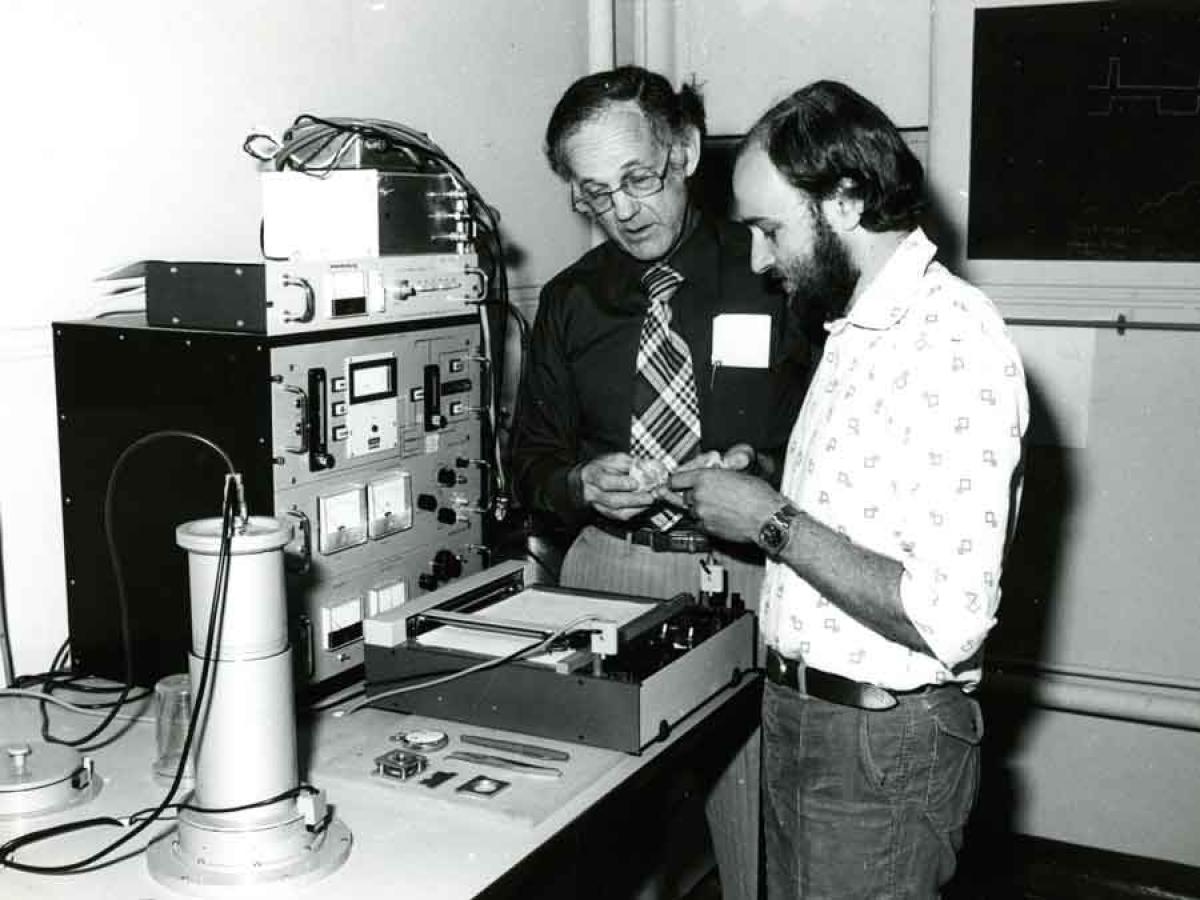
Apparently not satisfied with one doctorate degree John, now married to Jo and starting a family, then travelled to Oxford to take up a scholarship awarded by Christchurch College to study for the degree of D Phil.. During his time in England he took his wife and small son on a trip through Europe, and could not resist repeating Galileo's famous experiment at the Leaning Tower of Pisa. He danced with his toddler son "sur le pont d'Avignon" before returning to Oxford; he received the D.Phil. (Oxon) in 1953. His thesis was on the nuclear structures of some of the heavy elements, and John always regarded his work on the decay of Bi-207 to be his greatest scientific achievement. In 1953 the family returned to Australia where John rejoined the AAEC at the Physics Department of the University of Melbourne.
Before long the adventure of an overseas post again beckoned and in 1956 the family moved to Canada where John was appointed Lecturer at the University of British Columbia in Vancouver. In 1960 he moved to the University of Calgary, Alberta, as Assistant Professor, where he remained for eleven years. John was promoted to Professor in 1968. It was in Alberta that he revived his interest in cosmic ray physics through studies at a high-altitude site at Sulphur Mountain in the Canadian Rockies, and started pioneering work on radio emission from cosmic ray showers at the Dominion Radio Astrophysical Observatory near Penticton. In addition to his research activities, and giving dynamic lectures to his students, John sang in choirs, played cricket, explored the Rockies, skated, skied, and culminated a hockey career of 40 years by qualifying as a grass hockey umpire and umpiring in the 1967 Pan Am games.
In 1971 John returned to Australia where he took up a position as Professor of Physics at the University of Adelaide, and in 1982 he was appointed Elder Professor of Physics, a distinguished title dating back to the Nobel prize-winning Sir William Bragg, who was appointed to the position in 1886.
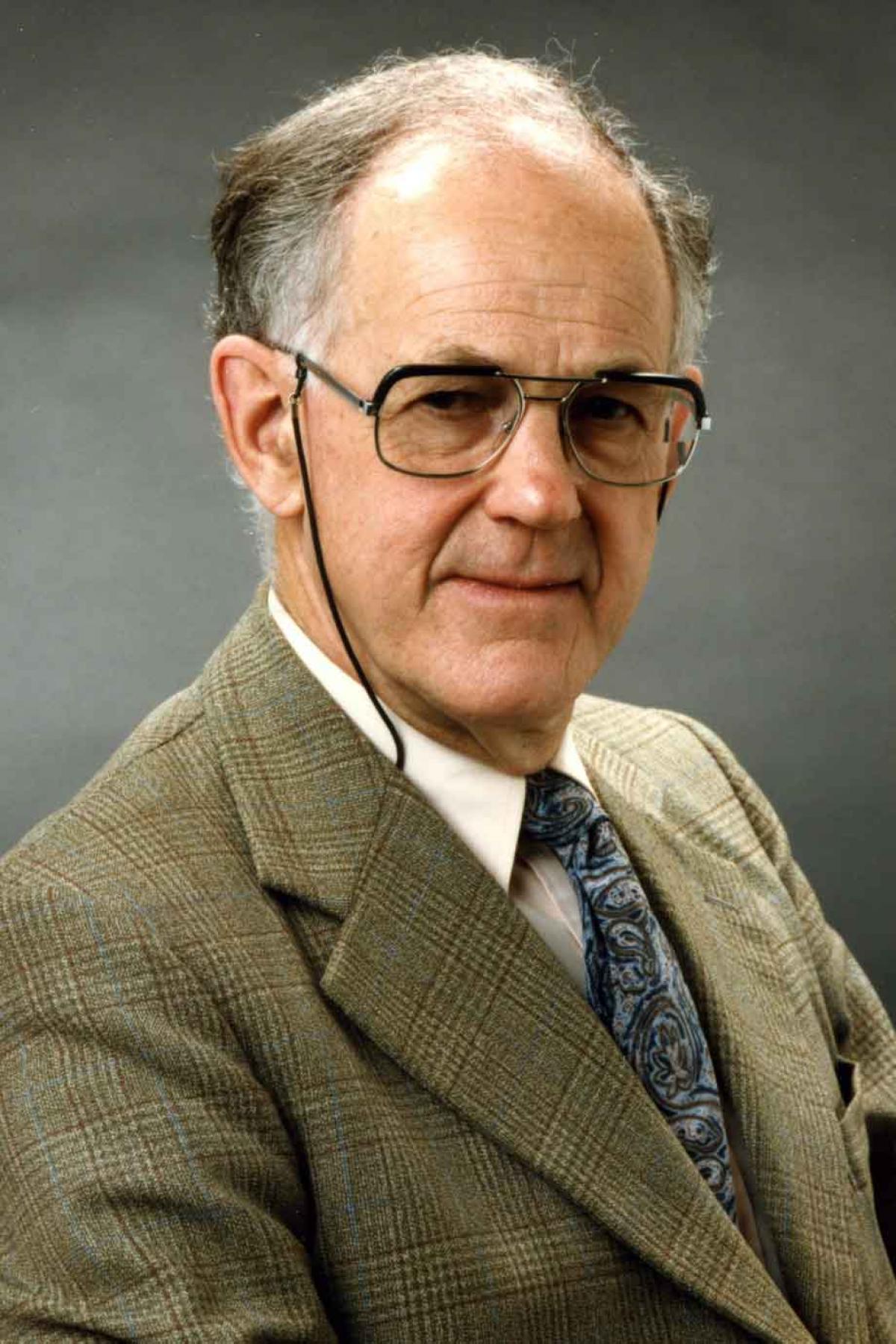
John was passionate about teaching, and subscribed to the view that physics academic staff should be able to lecture on any undergraduate physics course. He made a special study of the teaching of elementary physics courses, particularly undergraduate laboratories in which he enjoyed performing entertaining experiments. His yellow Volvo with its sticker "Physics is Phun" will be fondly remembered. His main research interest continued to be in cosmic rays, and together with colleagues, he relocated the Penticton cosmic ray detectors to the University of Adelaide's research station at Buckland Park. This was the beginning of the Adelaide Cosmic Ray Physics (later named High Energy Astrophysics) group which John led for the next 20 years, until his retirement.
He also played a major role in raising awareness of employment opportunities in physics, and published extensively on physics education. He surveyed all advertisements for physics employment in "The Australian" newspaper weekly for 25 years and regularly published the results and trends, for which he received the Australian Institute of Physics Outstanding Service award in 2003. In between all this activity John found time to build a harpsichord.
During the mid-1970s John and Jo participated as volunteers in archaeological digs at Roonka on the River Murray. This led John to ask the question of how could physics assist archaeology? He was advised that dating would help, and hence developed an interest in the relatively new technique of thermoluminescence dating then decided that he would start up a laboratory as a side-line to his core research interest in cosmic rays. He reasoned that it would make a good hobby in his retirement, which at that stage was still fifteen years off! Luminescence soon began to dominate his academic research, and John wrote over a hundred papers on the subject. His field activities extended to Lake Mungo, Lake Amadeus, the Flinders Ranges and many other localities in Australia, and as far afield as China and Thailand. Back in the laboratory he and his students developed and built a "Three Dimensional" Fourier Transform spectrometer for the study of the wavelength of luminescence from mineral grains – the first such instrument to be built and still the only one of its calibre in the world. At the same time his interest in cosmic rays did not diminish and he applied his knowledge of it to luminescence: his paper on the relationship of cosmic ray penetration to depth, density and latitude is one of the most cited articles in the luminescence literature.
In 1990 he officially retired and delivered his valedictory lecture at which, among other things, he demonstrated how to cook eggs in liquid nitrogen.
John and Jo became members of the Glenunga Croquet Club, and in characteristic fashion John gave the game his very best, soon winning his first of several competitions. They were also active and valued members of the Field Geology Club of South Australia.
In 2007 John and Jo celebrated their 60th wedding anniversary.
In the academic world John continued to receive acclaim, including a special award from the University of Melbourne for being among its first PhD awards, and in 2002 the Royal Society of South Australia's Verco medal for an outstanding contribution to science, which had special meaning for John as his father had been awarded that same medal 64 years previously.
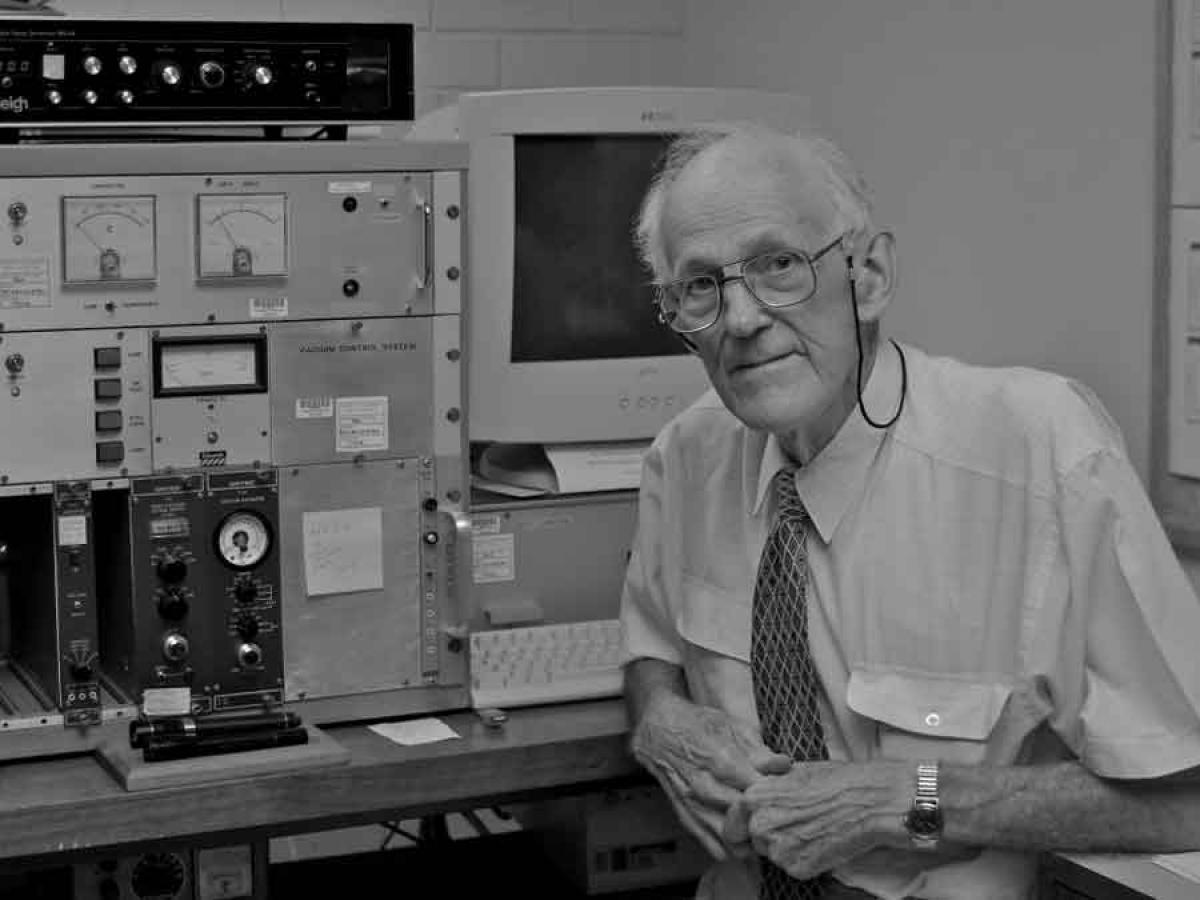
Retirement to John meant coming into the Physics Department five days a week and honing his expertise in luminescence dating and the physics of luminescence. He was also a regular contributor to the "Would you believe it?" column of the Adelaide daily newspaper, the "Advertiser".
In 2004 a special conference and celebratory dinner were held at the University of Adelaide in honour of John's 80th birthday. His only concession to octogenarianism, however, was to reduce his attendance in the lab to just 3-4 days a week (Wednesday mornings being dedicated to croquet) and, following a knee operation, to cease riding his bicycle to work and to use the lift instead of the stairs to reach his office. His publication output did not decrease and he continued with pioneering research, particularly that involving use of his 3D spectrometer, right to the end.
His last message to his colleagues at the luminescence lab, only three days before he went into hospital, was "I may not be in for the rest of this week. Please keep my laptop charged up".
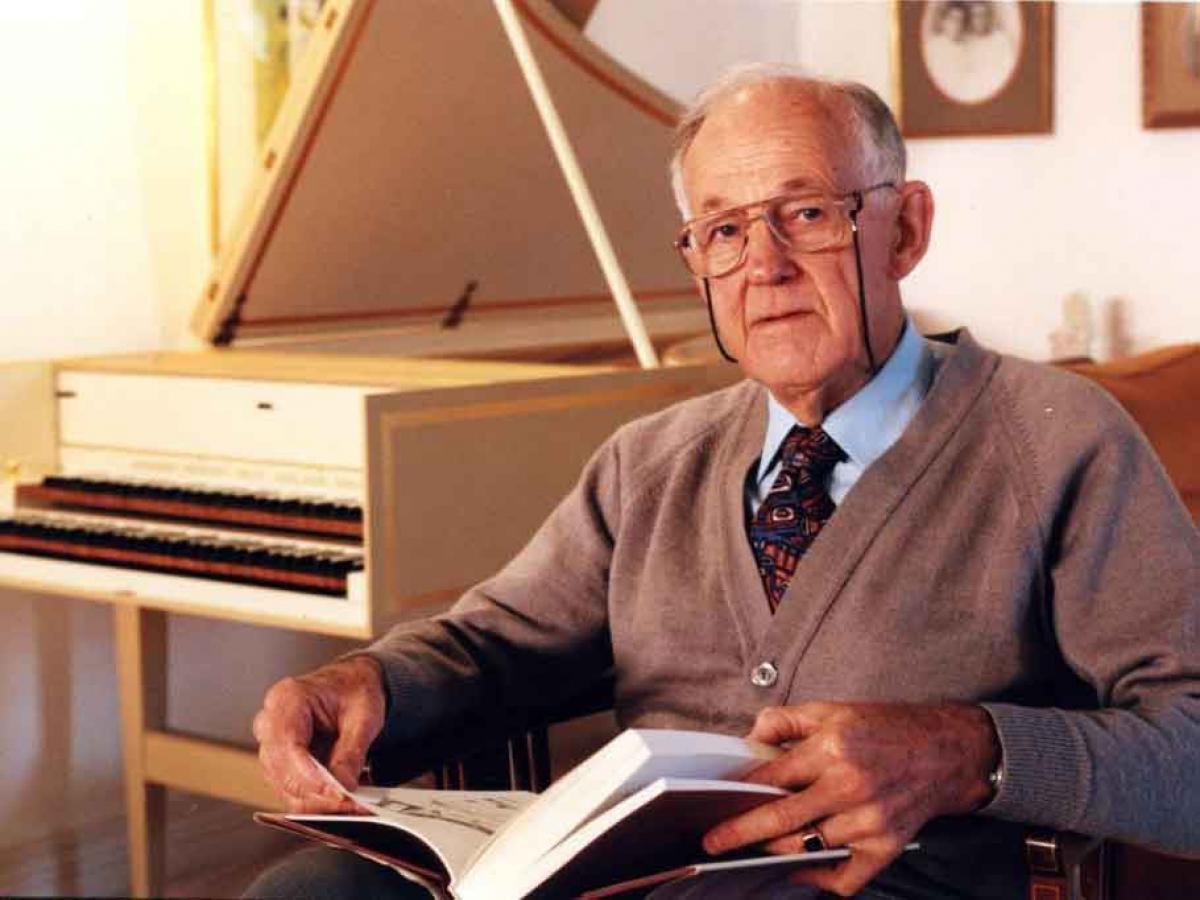
John's service to the University of Adelaide has been outstanding, including periods as Dean of Science, Chairman of Physics and later of Physics and Mathematical Physics, and also Chairman of the Education Committee. He was a wonderful colleague and friend, held in the greatest esteem by the Cosmic Ray and Luminescence Groups which he had founded, by his colleagues in Physics, Geology and Geography, and by the worldwide communities in those disciplines.
A gifted and caring teacher, mentor and supervisor, he always put his students and their welfare above all else, giving generously of his time, knowledge and expertise. Although he was a firm disciplinarian, his heart was of gold. Often a colleague would find on their desk an apple, a cluster of delicious peaches, capsicums or other products of his garden for, among his many other talents, he was a dedicated gardener and delighted in sharing the results.
His kindness and generosity, sense of humour, love of jokes, deep love of science, breadth of knowledge and intellectual curiosity were, and will continue to be, an inspiration to all who knew him. He will be sorely missed. He is survived by his wife Jo, with whom he shared a true partnership for 70 years, and children James, Ann and Kate.
By Frances Williams and Nigel Spooner

